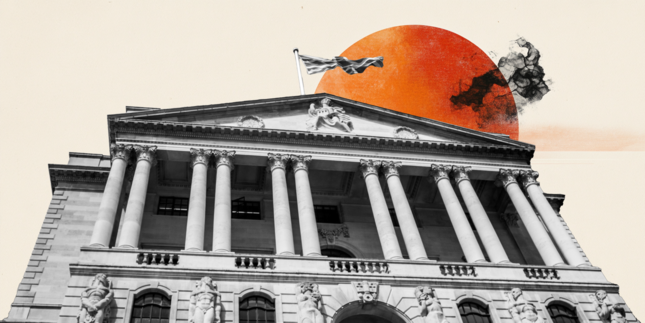Amidst the looming certainty that was the increased global inflation, markets around the world saw several retail prices having an exponential increase in December 2022, with a fine example being that of the wholesale egg prices in the US, that had reached the price of $5.43 (For a dozen eggs) on December 19th, 2022.
Though, despite the sudden increase in prices, global inflation’s percentages were mitigated (perhaps through the effect of procyclicality upon the broader issue of the liquidity crisis and its correlation with global inflation), at a such a degree, that the price of eggs fell to $2.61 by February 6th 2023.
The above partially confirms the speculation made on a past analysis by AAATrade, that 2023 begun by treating global bond markets kindly, as they went through a rebound, and correctly so, gave a premonition for decreased inflation fears.
Though, the above should not reassure analysts, investors and/or traders, as it does not erase the reality of this “loneliness economy”we experience in modern times, nor does it seize the factuality that our world (and the financial events that uphold it) is, and always will be unstable.
But how does this instability change (or affect) the financial facts that govern our reality, and the markets in general?
Prior to the above analysis, the matter of inflation needs to be addressed, as the majority of financial observations still show the momentum of inflation to be in an upwards trend generally, albeit having been corrected regarding the services sector.
Additionally, as mentioned again, inflation is the rate of increase in prices over a given period of time and entails that the real value of money will lose on its purchasing power, impacting its financial integrity.
In the current instance, the starting question would be ‘What is the source of inflation?’.
Having in mind that, and in accordance with the event of procyclicality and financial variables’ oscillation around a trend during an economic cycle, the source of inflation seems to be clear when one decodes its very essence.
The source of inflation can be said to be the event (or the result, alternatively), of an action impacting the demand and/or the supply of an item, a service, a commodity, etc; thus, affecting the entirety of an industry eventually.
One such example, is the aforementioned egg situation. As one would wonder on the source of such an exponential increased level of inflation, and quite rightfully so.
In this case, the supply and demand levels respectively became low and high, as the largest outbreak of bird flu in the history of US killed millions of chickens in the country, skyrocketing the prices of eggs.
By seeing the current example, one can understand how inflation can have its source in a plethora of events, including pandemics, wars, company layoffs, scarcity of raw materials, or even other smaller events; confirming the factuality that a crisis can be triggered not only by a big event, but also by many smaller ones.
Now that there is a clear picture of inflation and its source, the elephant of the room is ready to be addressed. Namely, the instability of the financial markets.
Inflation can be explained by the conventional view that a modern market economy is essentially stable, and by constantly being in a state of equilibrium-seeking and sustaining, an exogenous shock is necessary for some crisis to occur.
However, a hypothesis by Hyman P. Minsky called the ‘Financial Instability Hypothesis’ argues that stability is destabilizing, while at the same time, the internal dynamics of a system can be exclusively responsible for market failures.
Additionally, the same hypothesis supports the argument that a system’s behavior is determined by the level of profit, which is in turn determined by aggregate demand, ultimately concluding that aggregate profits equal aggregate investment plus the government deficit.
Taking the above hypothesis into a practical application, it can be seed that in the egg example one could consider the uncalled-for flu to be that exogenous shock that brought forth an equilibrium that balanced out profit with high prices (or, inflation). However, in combination with the FIH hypothesis, one could also argue that indeed the stability of the financial system in its entirety, is destabilizing, as the internal dynamics of a system (At the above example, with ‘internal dynamics’ being the dynamics of chicken and their life from egg to consumption, and with ‘system’ being the food industry and goods) act as the catalyst for instability, which will consequently lead to stability.
Therefore, it is understood that financial instability and systemic equilibrium are not mutually exclusive, but inter-affected.
One such example that supports the above phrase, is the very recent event of SVB’s failure, as it has resulted in parallelizing the event with the Cyprus crisis of 2013, which underscored flaws in the fractional reserve system.
In the broader spectrum of financial stability, the inflated price of eggs, in combination with the financial instability that resulted from the very internal dynamic of SVB, may bring forth a systemic equilibrium to balance out certain financial components (To name a few: inflation, interest rates, wage gaps, rent prices in the US, transnational commercial transaction prices, procedures in bank regulation, macroprudential policies, conduct regulation mechanisms, governmental hedging mechanisms, etc.). The above can be further examined on their own,
when one takes into consideration the systemic contagion worries, which have risen in the financial analysts and regulators spheres, as a result of Silicon Valley Bank’s collapse.
Consequently, by applying all the above in the actualities that govern our financial world, one would indeed find that regardless of how much regulatory overwatch there is upon financial institutions, good prices, systemic risk aversion mechanisms, etc., financial instability is and always will be a vital part for financial equilibrium to materialize and negating it would be an error.
As to how financial equilibrium is materialized by financial instability though, is a wholly different discussion, though still related to the egg situation paradigm.
Concluding, as a leading investment firm, AAATrade, warns its investors and traders to be careful in the dealing of assets during a liquidity crisis. As such, it also encourages them to be educated and well-informed prior to investing in new products/companies. Therefore, we offer a vast variety of products to invest in, that can fit the profit/risk model of the novice and professional clients, as well as the necessary analysis material for them to base their choices on.
Trading is risky. Information presented herein is not to be construed as a solicitation or an offer to buy or sell any Financial Instrument or to participate in any trading strategy. We also offer CFD products. 72.13% of retail CFD accounts lose money. CFDs trading is risky and your entire capital might be at risk. Information presented herein is not to be construed as a solicitation or an offer to buy or sell any Financial Instrument or to participate in any trading strategy.
Editors’ Picks

EUR/USD could test 1.1750 amid strengthening bullish bias
EUR/USD remains flat after two days of small losses, trading around 1.1740 during the Asian hours on Thursday. On the daily chart, technical analysis indicates a strengthening of a bullish bias, as the pair continues to trade within an ascending channel pattern.

GBP/USD consolidates above mid-1.3300s as traders await BoE and US CPI report
The GBP/USD pair struggles to capitalize on the overnight bounce from the 1.3310 area, or a one-week low, and oscillates in a narrow band during the Asian session on Thursday. Spot prices currently trade around the 1.3370 region, down less than 0.10% for the day, as traders opt to wait on the sidelines ahead of the key central bank event risk and US consumer inflation data.

Gold awaits weekly trading range breakout ahead of US CPI report
Gold struggles to capitalize on the previous day's move higher back closer to the $4,350 level and trades with a mild negative bias during the Asian session on Thursday. The downtick could be attributed to some profit-taking amid a US Dollar uptick, though it is likely to remain cushioned on the back of a supportive fundamental backdrop.

Dogecoin breaks key support amid declining investor confidence
Dogecoin trades in the red on Thursday, following a 4% decline on the previous day. The DOGE supply in profit declines as large wallet investors trim their portfolios. Derivatives data shows a surge in bearish positions amid declining retail interest.

Monetary policy: Three central banks, three decisions, the same caution
While the Fed eased its monetary policy on 10 December for the third consecutive FOMC meeting, without making any guarantees about future action, the BoE, the ECB and the BoJ are holding their respective meetings this week.
RECOMMENDED LESSONS
Making money in forex is easy if you know how the bankers trade!
I’m often mystified in my educational forex articles why so many traders struggle to make consistent money out of forex trading. The answer has more to do with what they don’t know than what they do know. After working in investment banks for 20 years many of which were as a Chief trader its second knowledge how to extract cash out of the market.
5 Forex News Events You Need To Know
In the fast moving world of currency markets where huge moves can seemingly come from nowhere, it is extremely important for new traders to learn about the various economic indicators and forex news events and releases that shape the markets. Indeed, quickly getting a handle on which data to look out for, what it means, and how to trade it can see new traders quickly become far more profitable and sets up the road to long term success.
Top 10 Chart Patterns Every Trader Should Know
Chart patterns are one of the most effective trading tools for a trader. They are pure price-action, and form on the basis of underlying buying and selling pressure. Chart patterns have a proven track-record, and traders use them to identify continuation or reversal signals, to open positions and identify price targets.
7 Ways to Avoid Forex Scams
The forex industry is recently seeing more and more scams. Here are 7 ways to avoid losing your money in such scams: Forex scams are becoming frequent. Michael Greenberg reports on luxurious expenses, including a submarine bought from the money taken from forex traders. Here’s another report of a forex fraud. So, how can we avoid falling in such forex scams?
What Are the 10 Fatal Mistakes Traders Make
Trading is exciting. Trading is hard. Trading is extremely hard. Some say that it takes more than 10,000 hours to master. Others believe that trading is the way to quick riches. They might be both wrong. What is important to know that no matter how experienced you are, mistakes will be part of the trading process.
The challenge: Timing the market and trader psychology
Successful trading often comes down to timing – entering and exiting trades at the right moments. Yet timing the market is notoriously difficult, largely because human psychology can derail even the best plans. Two powerful emotions in particular – fear and greed – tend to drive trading decisions off course.
